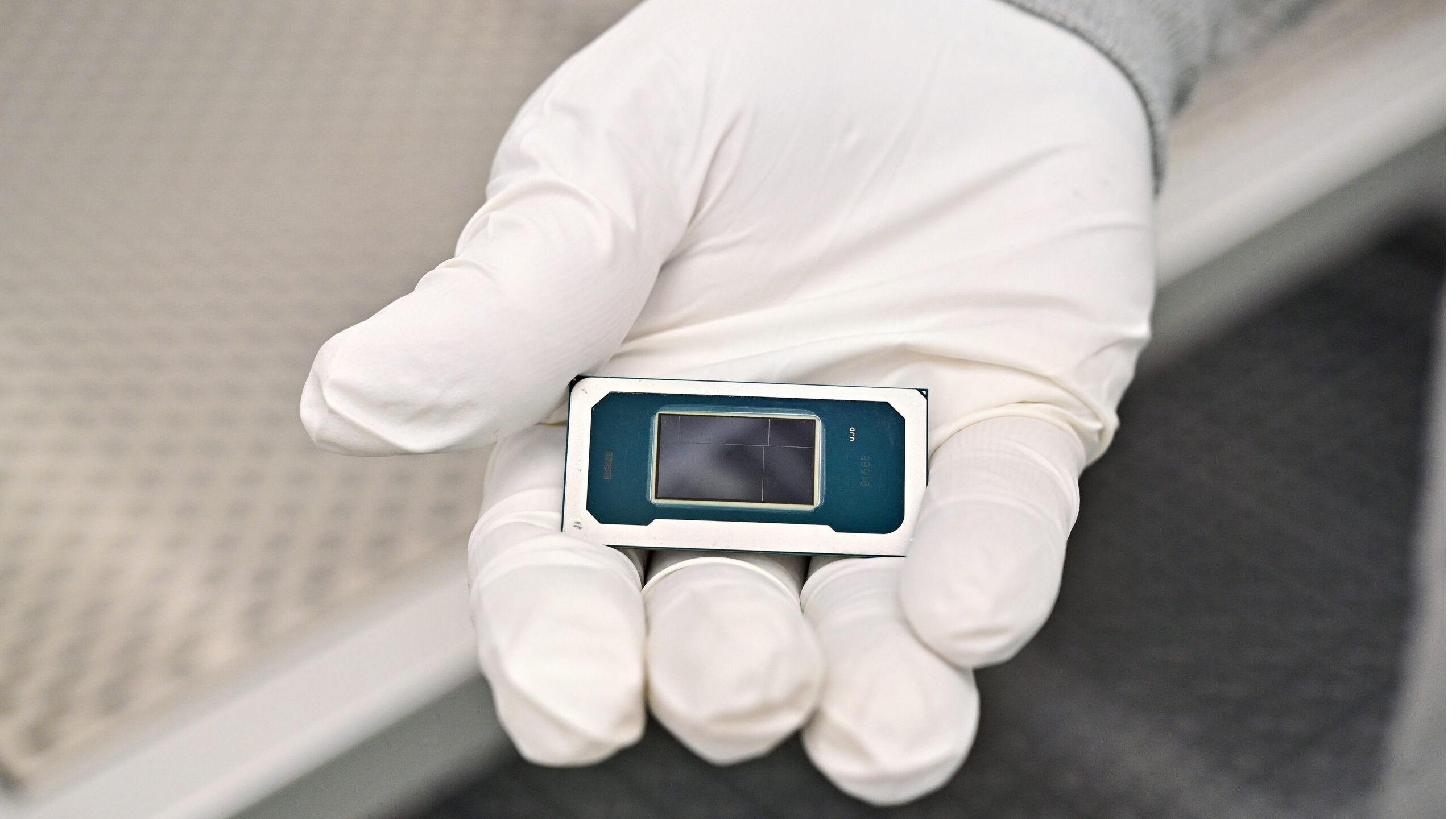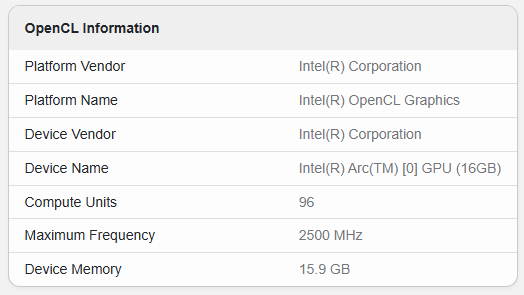New Panther Lake Core Ultra X7 358H leaks in new benchmark - Geekbench 6 result shows off 12 Xe3 Core iGPU's chops
Intel's next-gen mobile parts could be a huge leap in integrated GPU performance.

In case you missed it, our coverage of Intel's Tech Tour 2025 included an extensive breakdown of the chip company's upcoming Panther Lake mobile processors. There were many details that Intel left out of its presentation, though. Now, thanks to the tearless retina of the ever-watchful Benchleaks bot, we have our first proper leak of what seems like it may be final or near-final Panther Lake silicon.
The leaks appeared early this morning; there are fully eight results in total. Someone was testing an ASUS ROG Zephyrus G14 (GU405AA) laptop using the Geekbench Compute test on the integrated Xe3 GPU of an "Intel Core Ultra X7 358H". That model matches one of the leaked model names that was posted on ChipHell earlier this month and confirmed by CPUID, the developers of HWMonitor. The chip has sixteen CPU cores, which we understand to comprise four Cougar Cove P-cores, eight Darkmont E-cores, and four Darkmont LP-cores.
While the Geekbench result lists a maximum CPU frequency of 3751 MHz, digging into the result JSON tells a different story. Forty-five values populate the processor_frequency.frequencies array, ranging from 3519 MHz all the way up to 4767 MHz, and that's not a huge outlier; there are many results in the 4600-4700 MHz range. This might give us an idea of what kind of boost clocks we can expect from Panther Lake; 4.75 GHz is right in the same ballpark of what you can expect from AMD's Ryzen AI 9 HX 370 during a gaming workload.

As previously leaked by the well-known Golden Pig Upgrade, the "X" in the model name seems to indicate that this chip has the full 12-core GPU. Indeed, Geekbench reports that the tested GPU has 96 "Compute Units," because it's counting the individual Xe Vector Engines, or XVEs. There are eight XVEs to a Xe3-core; thus, twelve cores means 96 XVEs.
We knew that already, but what we didn't know were the kinds of clock rates we could expect from the integrated GPU. Geekbench reports a Maximum Frequency of 2.5 GHz, which is quite respectable even among integrated GPUs. This may not even be final silicon or drivers, though, because the GPU is reported as simply being an "Intel(R) Arc(TM) [0] GPU (16GB)".
The scores for the benchmark slowly went up as the tester re-ran it; the highest score achieved was 52946 points under OpenCL. Glancing over the Geekbench Browser, this result is in broadly the same range as AMD's Radeon 890M graphics, and in fact ahead of both the mobile GeForce RTX 3050 and Intel's own Arc A550M, which has sixteen Xe-cores and a relatively thirsty 75W-95W TDP. While the score might not sound too impressive, remember that we're looking at an integrated GPU with non-final software, running a benchmark that Intel typically lags in. So saying, it's actually a reasonably impressive result; these scores already beat Lunar Lake by nearly double.
Processor Name | Processor Type | Average Score |
Intel Core Ultra X7 358H | Integrated | 52946 |
NVIDIA GeForce RTX 3050 Laptop | Discrete | 50918 |
Intel Arc A550M | Discrete | 49894 |
AMD Radeon RX 6550M | Discrete | 45140 |
Intel Arc 140T | Integrated | 41707 |
AMD Radeon 890M | Integrated | 37103 |
AMD Radeon 780M | Integrated | 30282 |
Intel Arc 140V | Integrated | 27667 |
Panther Lake's integrated graphics are based on the Xe3 architecture, but unlike Xe2, where every implementation of it used the same fundamental architecture, Xe3 takes a step back toward the original Xe philosophy, where the GPU core architecture is tweaked for the specific application. The upcoming "Celestial" discrete GPUs based on Xe3 will purportedly use the "Xe3p" variant of the architecture, about which nearly nothing is known just yet.
Get Tom's Hardware's best news and in-depth reviews, straight to your inbox.
Despite being based on Xe3, though, the graphics in Panther Lake will be branded as Arc B-series products. That's because, as our own Jeff Kampman said, Xe3 is "more of a continuous improvement of the existing Battlemage architectural lineage than an all-new design." Intel says that Xe3 offers as much as a 7.4x improvement in certain microbenchmarks, but is only committed to an "over 50%" gain in actual performance versus the "Lunar Lake" Core Ultra 200V series. 50% is the gain in GPU size over Lunar Lake, so let's hope this Geekbench result is a hint at a much larger gain than that versus the last-gen chips.

Follow Tom's Hardware on Google News, or add us as a preferred source, to get our latest news, analysis, & reviews in your feeds.

Zak is a freelance contributor to Tom's Hardware with decades of PC benchmarking experience who has also written for HotHardware and The Tech Report. A modern-day Renaissance man, he may not be an expert on anything, but he knows just a little about nearly everything.
-
nickytomshardware Am i the only one who thinks its weird that the iGPU is only slightly better than a discrete gpu thats 4,5 years old. Where is the comparison to todays laptop gpus to make a fair comparison?Reply
Intel Core Ultra X7 358H (Panther Lake leak) - Integrated - 52946
NVIDIA GeForce RTX 3050 Laptop - Discrete - 50918